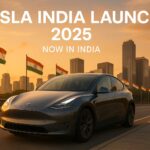In the wake of the horrific Air India Crash, a government investigator has severely denounced foreign media for spreading “selective and unverified” facts. While the investigation continues, experts urge citizens not to jump to conclusions. Here’s the complete story.
The Crash That Shook the Nation
A tragic incident involving an Air India flight shocked the entire nation. The aircraft, operating a domestic route, crashed shortly after takeoff or landing, resulting in multiple fatalities and widespread damage. Families of the crew and passengers were left devastated, and aviation authorities immediately launched a detailed investigation into the Air India Crash.
What We Know So Far
- The accident occurred.
- Preliminary findings suggest technical failure or adverse weather conditions.
- The Directorate General of Civil Aviation (DGCA) has appointed a high-level investigation team.
- The black box and cockpit voice recorder (CVR) have been recovered for analysis.
Media vs Investigation: The Growing Tension
At a recent press conference, the chief investigator criticized international media outlets for circulating misleading and unverified claims about the cause of the Air India Crash.
“It is too early to arrive at firm conclusions. A large number of the media reports flying around worldwide are unverified, speculative, and selective.”
What Are the Media Reports Claiming?
Certain international media houses have made unsubstantiated claims, including:
- The aircraft was poorly maintained.
- The pilots were possibly overworked or fatigued.
- Air India had ignored previous warnings about this aircraft.
However, none of these assertions have been supported by official data or black box analysis at this point.
Why the Investigator’s Statement Matters
Misinformation during such sensitive investigations can be harmful. The investigator’s rebuttal of media speculation is crucial for three major reasons:
Preserves Public Confidence
Baseless reports can trigger unnecessary panic among air travelers. Clear communication helps rebuild trust.
Prevents Political Manipulation
Speculative narratives can be weaponized for political purposes or to assign blame unfairly.
Supports an Unbiased Investigation
Investigators require time and space to work independently without media influence or public pressure. This is especially critical in complex situations like the Air India Crash.
The Role of the Black Box
The Flight Data Recorder (FDR) and Cockpit Voice Recorder (CVR) are essential to uncovering what exactly happened during the Air India Crash. These devices capture:
- Speed, altitude, and engine data
- Pilot and co-pilot conversations
- Warning sounds and mechanical alerts
Only after thoroughly analyzing this data can investigators determine if the crash was caused by human error, technical fault, or external factors.
Air India’s Official Response
Air India, now owned by the Tata Group, issued a statement pledging full cooperation with authorities.
“We are working closely with investigators. Our top priority remains the welfare of the affected families. We urge the media to act responsibly.”
The airline has also:
- Announced compensation for victims’ families
- Offered free counseling to survivors
- Ordered safety inspections on similar aircraft within its fleet
Expert Opinions on the Ongoing Probe
Aviation experts have echoed the investigator’s call for patience and responsible reporting.
“The rush to assign blame without facts is dangerous. Crash investigations are scientific and require time. Let the data speak.”
Another expert warned that emotional or sensational media coverage could influence both legal outcomes and public perception of the Air India Crash.
India’s History with Air Tragedies
India has witnessed multiple devastating aviation accidents over the years, including:
- The 2020 Kozhikode runway overshoot that killed 21 people.
- The 1996 Charkhi Dadri mid-air collision, one of the world’s deadliest.
Each event led to significant improvements in aviation safety. It’s expected that the Air India Crash will also push for stronger regulations in maintenance, crew training, and aircraft inspections.
What Happens Next?
According to DGCA and ICAO procedures, the next steps in the investigation will include:
- Detailed analysis of flight data and audio recordings
- Interviews with air traffic controllers and airline staff
- Forensic examination of aircraft debris
- Review of weather data and pilot training records
Authorities caution that a final report may take several weeks or months. Accurate conclusions cannot be rushed, especially in a complex case like the Air India Crash.
Final Thoughts: Truth Over Speculation
The Air India Crash is a heartbreaking event that demands careful investigation and factual reporting. Sensational headlines and premature conclusions only create confusion and hinder justice. As investigators work towards finding the truth, it’s crucial for the public and the media to remain calm, responsible, and focused on verified updates.



